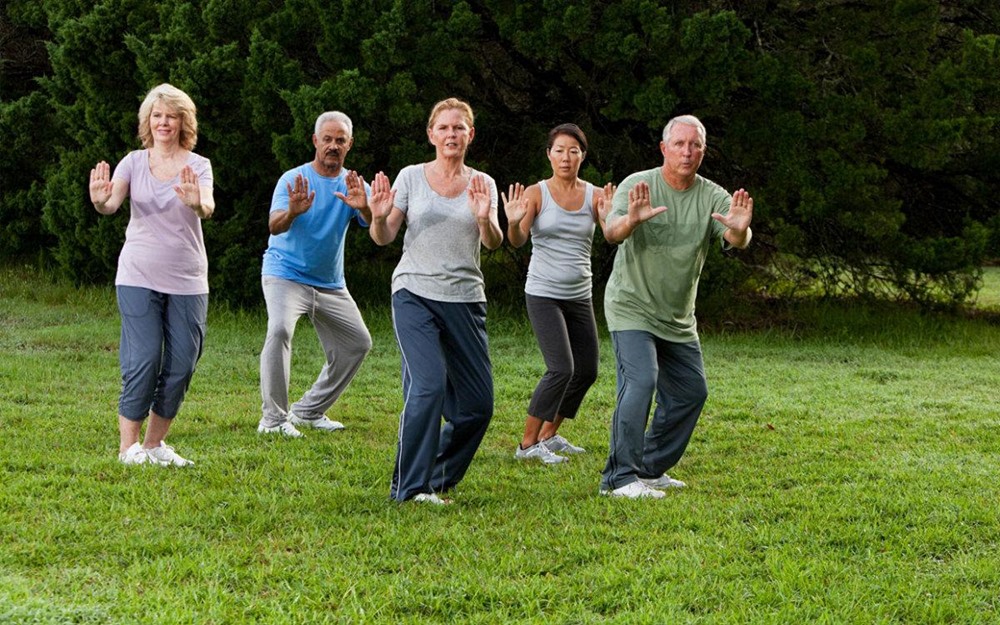Last Updated on: 18th December 2024, 12:30 pm
Tai Chi is a practice from ancient China, originally a martial art, now a form of movement meditation. It involves gentle, flowing movements suitable for all ages and fitness levels. Tai Chi focuses on slow, deliberate movements synchronized with deep breathing to promote physical and mental well-being.
- Tai Chi has gained popularity in the Western world.
- Its simplicity and benefits make it appealing.
- Practitioners experience improved balance, flexibility, strength, and reduced stress and anxiety.
Tai Chi combines physical exercise with mental focus, offering a serene path to wellness.
As Tai Chi spreads globally, it highlights the pursuit of harmony between body and mind, making it relevant today.
The Philosophy Behind Tai Chi

The Principles of Yin and Yang
Tai Chi is based on the Chinese philosophy of Yin and Yang, representing interconnected and interdependent forces. Movements are soft yet strong, promoting balance and fluidity. This teaches that strength comes from harmony, not force.
The Concept of Qi (Chi) and Its Significance in Tai Chi
Qi, or Chi, is the life force in Chinese philosophy. Tai Chi aims to cultivate and balance Qi through controlled movements and deep breathing, enhancing physical health and emotional well-being.
Harmonizing Body, Mind, and Spirit
Tai Chi unifies body, mind, and spirit through mindfulness, movement, and breath, creating peace and well-being. Practitioners report increased awareness and connection to themselves and the world.
Tai Chi encourages embracing life’s flow, finding strength in softness, and living in harmony with oneself and the environment.
Unveiling the Health Benefits of Tai Chi

Physical Health: A Foundation of Strength and Grace
- Flexibility: Enhances daily activity performance.
- Balance: Reduces fall and injury risk.
- Strength: Improves posture and core stability.
Mental Health: The Path to Inner Peace
- Stress Reduction: Calms mind and body.
- Concentration: Sharpens focus and presence.
- Mood Enhancement: Elevates mood and combats depression.
Backed by Science: The Evidence of Well-being
Scientific studies show Tai Chi improves balance and motor function, especially in older adults. It reduces stress and anxiety, lowers cortisol levels, and enhances immune function, reducing chronic disease risk.
Tai Chi offers holistic healing, blending physical, mental, and emotional benefits, supported by scientific research.
Tai Chi Techniques and Forms

The Importance of Slow, Controlled Movements
Tai Chi emphasizes slow, intentional movements for better mind-body connection. This pace enhances balance, strength, and flexibility, promoting calm and resilience.
Description of Basic Tai Chi Movements for Beginners
- Ward Off: A gentle pushing motion.
- The Crane Spreads Its Wings: Stretches the body.
- Brush Knee and Step Forward: Combines a brush motion with a step.
The Different Styles of Tai Chi and Their Characteristics
- Yang style: Gentle, flowing movements, ideal for beginners.
- Wu style: Focuses on micro-movements for balance and precision.
- Chen style: Combines slow movements with bursts of energy.
- Sun style: Agile steps, emphasizes fluidity and ease.
Each Tai Chi style offers a path to physical and mental well-being. The practice invites exploration of personal strength and serenity.
Practicing Tai Chi: Getting Started

Choosing the Right Style and Instructor
Start by selecting a Tai Chi style that aligns with your goals and find an instructor who provides guidance and support. Each style offers unique benefits, and a good instructor ensures a solid foundation.
Tips for Beginners: Clothing, Equipment, and Setting Realistic Goals
Wear loose, breathable clothing and supportive shoes. Minimal equipment is needed, just enough space to move. Set simple goals, focusing on movement fluidity and breath synchronization.
The Role of Breathing and Mindfulness in Tai Chi Practice
Breathing connects body and mind in Tai Chi. Deep, rhythmic breaths enhance focus and mindfulness, transforming movements into a meditative flow.
Patience and persistence are key in Tai Chi. Each session brings you closer to harmony and balance.
Integrating Tai Chi into Daily Life

Incorporating Tai Chi into Your Daily Routine
- Start your morning with Tai Chi, using gentle stretches and movements.
- Use short breaks for Tai Chi, centering yourself with deep breathing and postures.
- Make Tai Chi a consistent part of your daily routine.
Tai Chi: A Lifelong Practice
- View Tai Chi as a lifelong practice that evolves with you.
- Let Tai Chi guide you through life’s changes, providing strength and serenity.
Transformation Through Tai Chi: Personal Stories
- Discover personal transformations through Tai Chi, such as pain relief and peace.
- Be inspired by others who have experienced Tai Chi’s transformative power.
Integrating Tai Chi into your life involves incorporating mindfulness and grace into daily activities, leading to a more balanced life.
Bringing It All Together
Tai Chi harmonizes body, mind, and spirit. It is a journey of self-discovery and tranquility. Through slow, intentional movements, Tai Chi teaches balance and offers a path to holistic health. Embracing its principles leads to transformation, where challenges become growth opportunities, and every movement is a step toward inner peace. Let Tai Chi guide you to a life of harmony and well-being.

